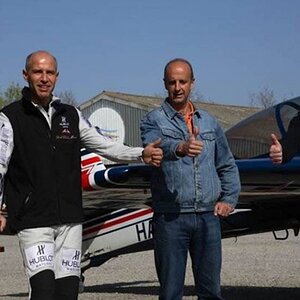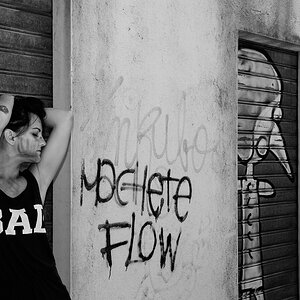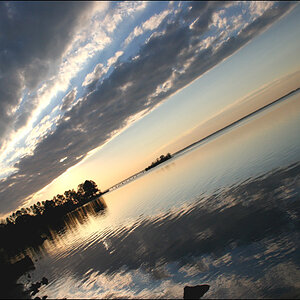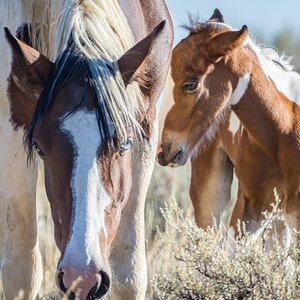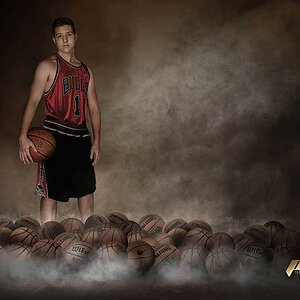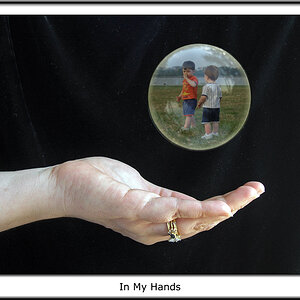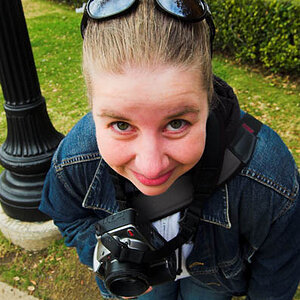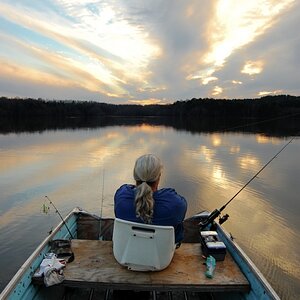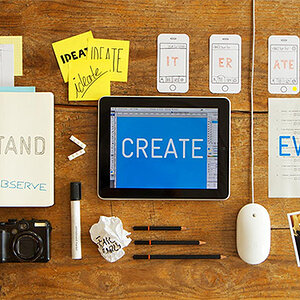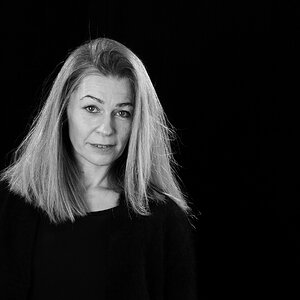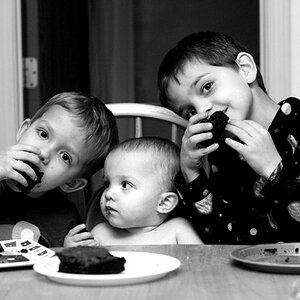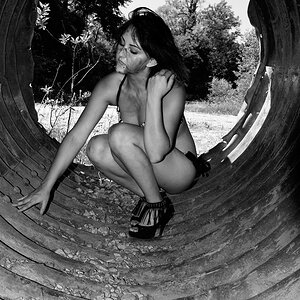Navigation
Install the app
How to install the app on iOS
Follow along with the video below to see how to install our site as a web app on your home screen.

Note: This feature currently requires accessing the site using the built-in Safari browser.
More options
You are using an out of date browser. It may not display this or other websites correctly.
You should upgrade or use an alternative browser.
You should upgrade or use an alternative browser.
Nikon D40... the cheapest SLT camera
- Thread starter a1157814a
- Start date
PatrickHMS
TPF Noob!
- Joined
- Oct 29, 2008
- Messages
- 1,411
- Reaction score
- 0
- Location
- Metro Atlanta
- Website
- www.hmscoatings.com
- Can others edit my Photos
- Photos NOT OK to edit
Besides the obvious fact that it is an entry-level camera, have anyone ever used this camera before? What are your opinions?
A D40 isn't an "entry-level camera", it is an entry-level DSLR. And a "Pro" from 4-5 years ago would love to have a DSLR as sophisticated as are either the "entry-level" Nikon D40 or the Canon EOS / Rebel XS(?) Series.
And although it is an entry level SLR, remember that ALL SLR's are high-end DIGITAL cameras.
I have higher end DSLR's and I still like to just go out an shoot with my D40 sometimes.
skieur
TPF Noob!
- Joined
- May 14, 2007
- Messages
- 5,071
- Reaction score
- 204
- Location
- Canada
- Can others edit my Photos
- Photos OK to edit
To provide a different view, a 6 megapixel camera is generally viewed as showing its age, even if it is not that old. Despite the rhetoric about big pixels and better light transmition and less noise, the noise difference between the Nikon D40 at 6 megapixels and the Sony A200 at 10 megapixels is only .1 (Popular Photography tests), despite the so-called more pixels being jammed on the same size chip and all the other excuses.
Also despite the rhetoric about blow-ups, photo quality is defined as 300 dots per inch printing quality. The largest size print from a 6 megapixel camera at photo quality is 6 1/2 inches by 10 inches. Needless to say a 10, 12 and 14 megapixel camera can provide a much larger photo quality print.
An image from a 6 megapixel camera would also degenerate in image quality with cropping and any postprocessing which would lead to noise and lower resolution.
A camera with better resolution from any brand would give a photographer more to work with and less image quality degeneration caused by the postprocessing work or enlargements.
skieur
Also despite the rhetoric about blow-ups, photo quality is defined as 300 dots per inch printing quality. The largest size print from a 6 megapixel camera at photo quality is 6 1/2 inches by 10 inches. Needless to say a 10, 12 and 14 megapixel camera can provide a much larger photo quality print.
An image from a 6 megapixel camera would also degenerate in image quality with cropping and any postprocessing which would lead to noise and lower resolution.
A camera with better resolution from any brand would give a photographer more to work with and less image quality degeneration caused by the postprocessing work or enlargements.
skieur
- Joined
- Nov 17, 2008
- Messages
- 286
- Reaction score
- 14
To provide a different view, a 6 megapixel camera is generally viewed as showing its age, even if it is not that old. Despite the rhetoric about big pixels and better light transmition and less noise, the noise difference between the Nikon D40 at 6 megapixels and the Sony A200 at 10 megapixels is only .1 (Popular Photography tests), despite the so-called more pixels being jammed on the same size chip and all the other excuses.
Also despite the rhetoric about blow-ups, photo quality is defined as 300 dots per inch printing quality. The largest size print from a 6 megapixel camera at photo quality is 6 1/2 inches by 10 inches. Needless to say a 10, 12 and 14 megapixel camera can provide a much larger photo quality print.
An image from a 6 megapixel camera would also degenerate in image quality with cropping and any postprocessing which would lead to noise and lower resolution.
A camera with better resolution from any brand would give a photographer more to work with and less image quality degeneration caused by the postprocessing work or enlargements.
skieur
With that being said, which new SLR would you recommend then? I want something out of the box that will be good for years to come and will allow me to grow as my skills increase
epp_b
No longer a newbie, moving up!
- Joined
- Aug 22, 2008
- Messages
- 2,135
- Reaction score
- 12
- Location
- True North Cold and Freezing
- Website
- www.eppbphoto.com
- Can others edit my Photos
- Photos OK to edit
It's not quite that simple. It's not all about megapixels. The larger you print, the further back you'll be standing to view the print, the less quality matters. I don't mean to make sound like it is linear relationship between print resolution and viewing distance, of course.
Megapixels grow exponentially, not linearly. 14mp is not two times larger than 6mp. 14mp is 4608 x 3072, 6mp is 3008 x 2000. That's only one third larger. It's a bit of a difference, but in order to get a significant difference of two times the size, you'll need 25mp (which only exists in the uber-expensive Sony A900 and reportedly in the even more expensive forthcoming D3X). In order to get any decent quality out of that many pixels, you need a full-frame sensor, but then you're spending big bucks.
Why do you think people love the D3 and D700 at mere 12mp? Because they have a similar, low pixel density as in the D40.
The actual quality of those pixels matter more than the quantity. The D40 has better image quality and ISO noise performance than the D40x/D60 because they are basically the same as the D40, only with more pixels crammed into the same-sized sensor and a lower base sensitivity.
If you want a photography medium that won't obsolete, use film (that is, until digital is advanced enough to replace medium and/or large format film, but that's not happening any time soon). Film is about as good as it's ever going to get because it's had over a century to mature. With film, whatever camera you use is completely irrelevant, it's all in the film you use. You will have the ongoing cost of the film itself and it's certainly trickier to work with, though. I just finished my first roll of film and it was, well...kinda blah.
Eg.: you can't do remote flash triggering with iTTL out of the box with the D40 (you can with the D70 and higher), but you can always buy add-ons that will do that instead.
Megapixels grow exponentially, not linearly. 14mp is not two times larger than 6mp. 14mp is 4608 x 3072, 6mp is 3008 x 2000. That's only one third larger. It's a bit of a difference, but in order to get a significant difference of two times the size, you'll need 25mp (which only exists in the uber-expensive Sony A900 and reportedly in the even more expensive forthcoming D3X). In order to get any decent quality out of that many pixels, you need a full-frame sensor, but then you're spending big bucks.
Why do you think people love the D3 and D700 at mere 12mp? Because they have a similar, low pixel density as in the D40.
The actual quality of those pixels matter more than the quantity. The D40 has better image quality and ISO noise performance than the D40x/D60 because they are basically the same as the D40, only with more pixels crammed into the same-sized sensor and a lower base sensitivity.
In that case, you will be sorely disappointed with any digital camera. Camera makers come out with replacements on a regular basis of 18-36 months with new features, better sensors, faster operation, better performance and so on. Digital is a relatively new medium; it's still a teenager. That said, as a hobbiest or amateur, it matters a lot less than if you are in it commercially.I want something out of the box that will be good for years to come
If you want a photography medium that won't obsolete, use film (that is, until digital is advanced enough to replace medium and/or large format film, but that's not happening any time soon). Film is about as good as it's ever going to get because it's had over a century to mature. With film, whatever camera you use is completely irrelevant, it's all in the film you use. You will have the ongoing cost of the film itself and it's certainly trickier to work with, though. I just finished my first roll of film and it was, well...kinda blah.
Any DSLR can do that. They are all based on the same principals. The more expensive you go, the more fringe features and performance you get built-in. That's not to say that the D40 is, by any means, slow....and will allow me to grow as my skills increase
Eg.: you can't do remote flash triggering with iTTL out of the box with the D40 (you can with the D70 and higher), but you can always buy add-ons that will do that instead.
Last edited:
PatrickHMS
TPF Noob!
- Joined
- Oct 29, 2008
- Messages
- 1,411
- Reaction score
- 0
- Location
- Metro Atlanta
- Website
- www.hmscoatings.com
- Can others edit my Photos
- Photos NOT OK to edit
What Epp said.
If you are a newbie, and shoot as an amateur or for hobby it might take you 1-2 years to outgrow the full potential of the D40 (and what you can do with it) or the entry-level Canon Rebel Series cameras.
And you use the word "cheapest" as opposed to less expensive. NO Nikon or Cannon DSLR is "cheapest" in my opinion. That term does not apply here. Somehow, to me, the word cheap has connotations of quality.
By then, you will know what you want (and want to do with) in terms of a camera body and lenses, and can choose from whatever the newest technology offerings are, and from whatever is available at that time.
As mentioned above, the upside of Digital photo technology is so far out that we are in the very early days, where the surface is only beginning to be scratched. Basically, a DSLR is mostly a computer with a shutter, that uses a lens, and we can all see how far computer technology has come in recent years.
Years ago, an entire Company, like any bank (with thousands of teller terminals all over) all ran off a computer that was FAR less powerful than any current vintage PC that we now use to read and post here on TPF.
If you are a newbie, and shoot as an amateur or for hobby it might take you 1-2 years to outgrow the full potential of the D40 (and what you can do with it) or the entry-level Canon Rebel Series cameras.
And you use the word "cheapest" as opposed to less expensive. NO Nikon or Cannon DSLR is "cheapest" in my opinion. That term does not apply here. Somehow, to me, the word cheap has connotations of quality.
By then, you will know what you want (and want to do with) in terms of a camera body and lenses, and can choose from whatever the newest technology offerings are, and from whatever is available at that time.
As mentioned above, the upside of Digital photo technology is so far out that we are in the very early days, where the surface is only beginning to be scratched. Basically, a DSLR is mostly a computer with a shutter, that uses a lens, and we can all see how far computer technology has come in recent years.
Years ago, an entire Company, like any bank (with thousands of teller terminals all over) all ran off a computer that was FAR less powerful than any current vintage PC that we now use to read and post here on TPF.
epp_b
No longer a newbie, moving up!
- Joined
- Aug 22, 2008
- Messages
- 2,135
- Reaction score
- 12
- Location
- True North Cold and Freezing
- Website
- www.eppbphoto.com
- Can others edit my Photos
- Photos OK to edit
Indeed. As a an amateur hobiest who posts most of his photos online and hasn't printed larger than 5x7 yet, my D40 could serve me for years upon years to come. The only real reason for me to upgrade would be for additional features that I want out of convenience, not necessity.If you are a newbie, and shoot as an amateur or for hobby it might take you 1-2 years to outgrow the full potential of the D40 (and what you can do with it) or the entry-level Canon Rebel Series cameras.
Yes! I think it is an exciting time to be into photography, especially digital. In the coming years, I expect we will see dramatic steps forward in digital photo technology.As mentioned above, the upside of Digital photo technology is so far out that we are in the very early days, where the surface is only beginning to be scratched. Basically, a DSLR is mostly a computer with a shutter, that uses a lens, and we can all see how far computer technology has come in recent years.
Years ago, an entire Company, like any bank (with thousands of teller terminals all over) all ran off a computer that was FAR less powerful than any current vintage PC that we now use to read and post here on TPF.
reg
TPF Noob!
- Joined
- May 28, 2008
- Messages
- 1,487
- Reaction score
- 1
- Can others edit my Photos
- Photos OK to edit
Other than the fact that it's NOT the cheapest DSLR... it's a fine camera.
fwellers
TPF Noob!
- Joined
- Nov 21, 2008
- Messages
- 440
- Reaction score
- 6
- Location
- Northern VA
- Website
- www.fwellers.com
- Can others edit my Photos
- Photos OK to edit
Indeed. As a an amateur hobiest who posts most of his photos online and hasn't printed larger than 5x7 yet, my D40 could serve me for years upon years to come. The only real reason for me to upgrade would be for additional features that I want out of convenience, not necessity.
Interesting point, and one I've been considering before I purchase my first dslr. I'd like to ask about the low light abilities of the d40 though. Are they good enough ( compared to the d90 ) to use a decent kit lense with, or even maybe a fast 50mm, and get decent shots in available light ?
Or is the whole ISO sensitivity deal less drastic between models than we're led to believe ?
Also, I believe it was you, who mentioned about the 6mp and cropping. Are you basically saying that you can do very little cropping to re-arrange the composition on the d40 before the picture looks all grainy ?
Thanks. I'm not challenging anything, just still deciding if I should get the d90 as a beginner, or save ~ $600 and buy a d40.
epp_b
No longer a newbie, moving up!
- Joined
- Aug 22, 2008
- Messages
- 2,135
- Reaction score
- 12
- Location
- True North Cold and Freezing
- Website
- www.eppbphoto.com
- Can others edit my Photos
- Photos OK to edit
Define "low light". I find the noise performance to be acceptable up to ISO 400 for just about anything, and ISO 800 when low light demands it. If you use Auto ISO, the D40 can adjust ISOs in 1/5 stops!I'd like to ask about the low light abilities of the d40 though.
Nothing from the D40's era is anywhere near as good as the D90 in low-light. The D90 is the start of a new generation of cameras from Nikon and is expectedly better, and also over the twice the cost.Are they good enough ( compared to the d90 ) to use a decent kit lense with, or even maybe a fast 50mm, and get decent shots in available light ?
You won't get handheld low-light shots with the D40 and it's slow kit lens, except at the wide end where can potentially find more light and use it's largest aperture. You will with the D90 and it's equally-slow kit lens in a pinch, but it's always better to use fast glass than to rely on high ISOs. A fast prime will get you very acceptable shots on either camera.
I got my very favorite concert shot with my D40 using ISO 800, 1/60th shutter and f/1.8 or f/2 (can't remember, I was using a manual lens, so there's no aperture information in the EXIF data)

Typically awful and spotty concert lighting and the D40 had no problem exposing it properly.
Sure, if you blow the original up 100% and look too closely, you'll see some noise in the dark areas. So don't look too closely.
I wouldn't say "very little". I've cropped images probably by a third to half and they look just fine. Like I said, for there to be a drastically noticeable difference, you need to just about double the size, and that only happens at 25mp.Also, I believe it was you, who mentioned about the 6mp and cropping. Are you basically saying that you can do very little cropping to re-arrange the composition on the d40 before the picture looks all grainy ?
Don't worry too much about cropping. Get your compositions right to begin with and you won't need to crop.
If you are cheap or want something very small, get the D40. If you have the money to spend, get the D90. It really is quite a lot better in terms of noise performance and built-in features.Thanks. I'm not challenging anything, just still deciding if I should get the d90 as a beginner, or save ~ $600 and buy a d40.
Other than Nikon's deliberate crippling of the D90's USB connectivity (it doesn't tell the computer "I'm a hard drive" like Nikons always have, instead, it says "I'm a camera", which means that only certain operating systems with certain, usually buggy, drivers can recognize it) and the useless live view and movie recording, I'd love to have a D90.
Last edited:
skieur
TPF Noob!
- Joined
- May 14, 2007
- Messages
- 5,071
- Reaction score
- 204
- Location
- Canada
- Can others edit my Photos
- Photos OK to edit
With that being said, which new SLR would you recommend then? I want something out of the box that will be good for years to come and will allow me to grow as my skills increase
Unfortunately no camera has it all. I like the excellent live view with fast autofocus and tilting LCD screen of the Sony A350 with 14.2 megapixels. Being able to buy body only meant not having to be concerned with kit lenses that are often lower in quality. Zeiss, Sony, and Minolta lenses also provide some unique and high quality optics.
The Canon Xsi has a better optical viewfinder but poorer live view with autofocus delay and no tilting LCD screen. Sony also has wireless flash control which is not on the Canon and in body stabilization versus lens stabilization by Canon which is more expensive as in Canon lenses are more expensive.
The Pentax K20D is a good camera with some great features but $500 more for body only and the autofocus is slower in low light and there is a mirror delay in their live view.
The Nikon D60 is not considered the easiest camera to use in this range with menu organization described as "odd" in reviews. Wireless flash control is also missing as in an excellent in box RAW converter program.
Canon, Nikon and Sony all have pro cameras that you can grow up to so-to-speak but in the end, it is really a matter of which features and what specs. are you going to make the most use of? That is an individual decision.
skieur
epp_b
No longer a newbie, moving up!
- Joined
- Aug 22, 2008
- Messages
- 2,135
- Reaction score
- 12
- Location
- True North Cold and Freezing
- Website
- www.eppbphoto.com
- Can others edit my Photos
- Photos OK to edit
I wouldn't consider live view as part of my decision process. If you're coming from a point and shoot, you might get hung up on it, but my advice is: don't. Using the viewfinder to see exactly what's happening through the lens, in real time, as our eyes see, is the whole point of an SLR.Unfortunately no camera has it all. I like the excellent live view with fast autofocus and tilting LCD screen of the Sony A350 with 14.2 megapixels. Being able to buy body only meant not having to be concerned with kit lenses that are often lower in quality. Zeiss, Sony, and Minolta lenses also provide some unique and high quality optics.
The Canon Xsi has a better optical viewfinder but poorer live view with autofocus delay and no tilting LCD screen. Sony also has wireless flash control which is not on the Canon and in body stabilization versus lens stabilization by Canon which is more expensive as in Canon lenses are more expensive.
I'd consider the viewfinder to be a much more important aspect of buying. I find the viewfinders on Canon and Nikon to be good, especially with full-frame and film SLRs. On other brands, the viewfinder seems like an afterthought. I will concede, however, that Sony's AF system is stupidly fast -- faster than even Canon USM or Nikon AF-S.
In-body IS might be nice, but, keep in mind, when IS/VR is in the lens, you can see happening through the viewfinder. In-body IS might give you a useless icon or an almost-useless stabilization scale, but that's it.
fwellers
TPF Noob!
- Joined
- Nov 21, 2008
- Messages
- 440
- Reaction score
- 6
- Location
- Northern VA
- Website
- www.fwellers.com
- Can others edit my Photos
- Photos OK to edit
Thanks for your reply epp_b. I really do appreciate it.
I'm coming to understand that the faster glass is the most important thing for lower light. I've seen quite a few comparisons by now of different cameras with their ISO's cranked up, and it seems to me that until you get to the D700 level they are pretty equal, with 1 or 2 stops separating them at most.
For the D90 it looks like the pic stops being clean after iso800. So the wide aperture is the key.
That means, I can stop focusing as much on that, and start seeing what other features are important, like the way the viewfinder feels when looking through it, how well and fast it autofocuses, etc.... I'll have to start making some more comparisons with that in mind, with the d90 vs d80 vs canon rebel series.
Does anyone know how important the dynamic lighting ability of the d90 is ? It looks like it makes a big difference in pictures, but I don't know if it's more of a convenience thing or a trick or really a great feature.
The hunt is still on for this wannabe.
I'm coming to understand that the faster glass is the most important thing for lower light. I've seen quite a few comparisons by now of different cameras with their ISO's cranked up, and it seems to me that until you get to the D700 level they are pretty equal, with 1 or 2 stops separating them at most.
For the D90 it looks like the pic stops being clean after iso800. So the wide aperture is the key.
That means, I can stop focusing as much on that, and start seeing what other features are important, like the way the viewfinder feels when looking through it, how well and fast it autofocuses, etc.... I'll have to start making some more comparisons with that in mind, with the d90 vs d80 vs canon rebel series.
Does anyone know how important the dynamic lighting ability of the d90 is ? It looks like it makes a big difference in pictures, but I don't know if it's more of a convenience thing or a trick or really a great feature.
The hunt is still on for this wannabe.
Similar threads
- Replies
- 9
- Views
- 358
- Replies
- 0
- Views
- 186

